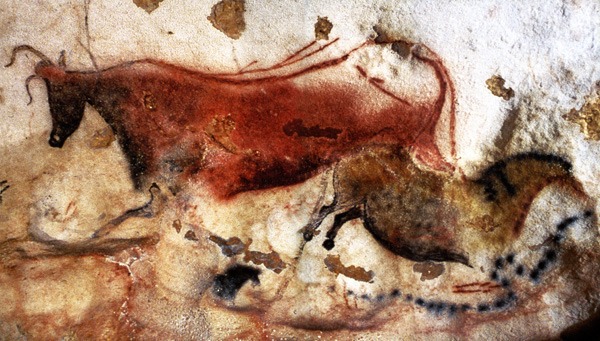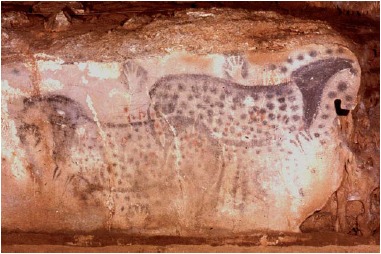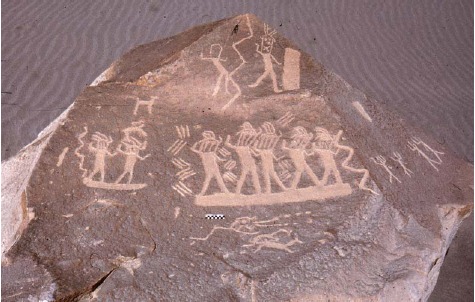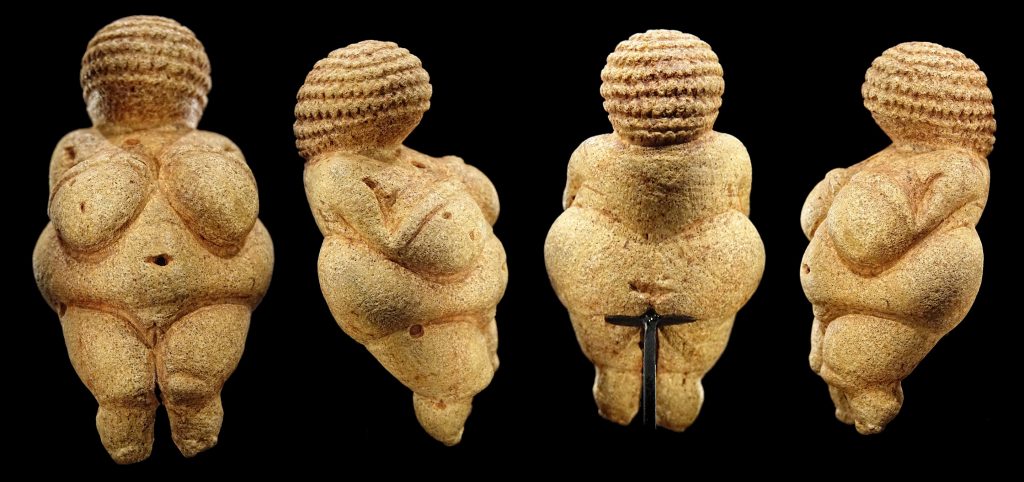There are many works of art and design in humankind’s prehistory. While it’s impossible to answer many of the questions we have about prehistoric art, these ancient works have continued to captivate people since their discovery in 1940 by French archaeologist Henri-Édouard-Prosper Breuil. Breuil is credited as the first person to rediscover these ancient cave paintings or pictographs in the Lascaux Cave in France.

What forms did Prehistoric art and design take, you ask?
Firstly, Pictograms (or pictographs), like those discovered in France, are drawings or paintings. They’re relatively easy to date because we can take samples of the materials used to create them. In many cases, they used charcoal, or iron oxides, sometimes mixed with animal fats. I wonder who the DaVinci of the prehistoric world was? Somebody get Pixar on the line!

Next up, we have petroglyphs. These are carvings that are typically found etched into stone walls. We’re not sure what ancient humans used to create these, but they must have had sharp tools for doing this kind of work. An impressive feat for the time!

Geoglyphs are perhaps the most interesting of all ancient art, in my opinion. The most famous of the world’s Geoglyphs is The Nazca Lines in the Nazca Desert in modern-day Peru. These were large-scale illustrations created by manipulating the earth and adding or removing stones and gravel. This particular Geoglyph was made sometime between 500 AD – 500BC and is thought to depict a monkey. While we can’t say for sure, one of the more interesting hypotheses about why geoglyphs may have been created is that those who made them thought their gods could look down at them from the sky.

Of course, there were many other forms of art in the prehistoric world, but I especially want to make a note of this incredible statue, The Venus of Willendorf. We only call the figure “Venus” as a placeholder because the statue’s existence predated the roman goddess Venus by like a bazillion years (23,00 years roughly). As you can see, we’ve been making art for a very, very long time!

We’ll never know, but it’s more fun that way… right?
Like today, it’s difficult to discern a clear line between art and design during this period. We’re not really sure what prehistoric people were trying to communicate to each other if anything. Still, it’s as rich a period as any to examine what humans worked on and how it may help us understand ourselves today.
References
Citation for the Venus Statue: Bjørn Christian Tørrissen — https://bjornfree.com/travel/galleries/, CC BY-SA 4.0, https://commons.wikimedia.org/w/index.php?curid=89071957
Horses in The Lascaux Cave: N. Aujoulat (2003) ©MCC-CNP Original, http://www.bradshawfoundation.com/lascaux/
Spotted Horses in France: photograph by R. G. Bednarik, https://en.wikipedia.org/wiki/Pech_Merle
Peru Petroglyph: Toro Muerto, Peru, Photograph by R. G. Bednarik, https://en.wikipedia.org/wiki/Petroglyph
Photo of the Nazca Lines: By Diego Delso, CC BY-SA 4.0, https://commons.wikimedia.org/w/index.php?curid=42787825
Leave a Reply